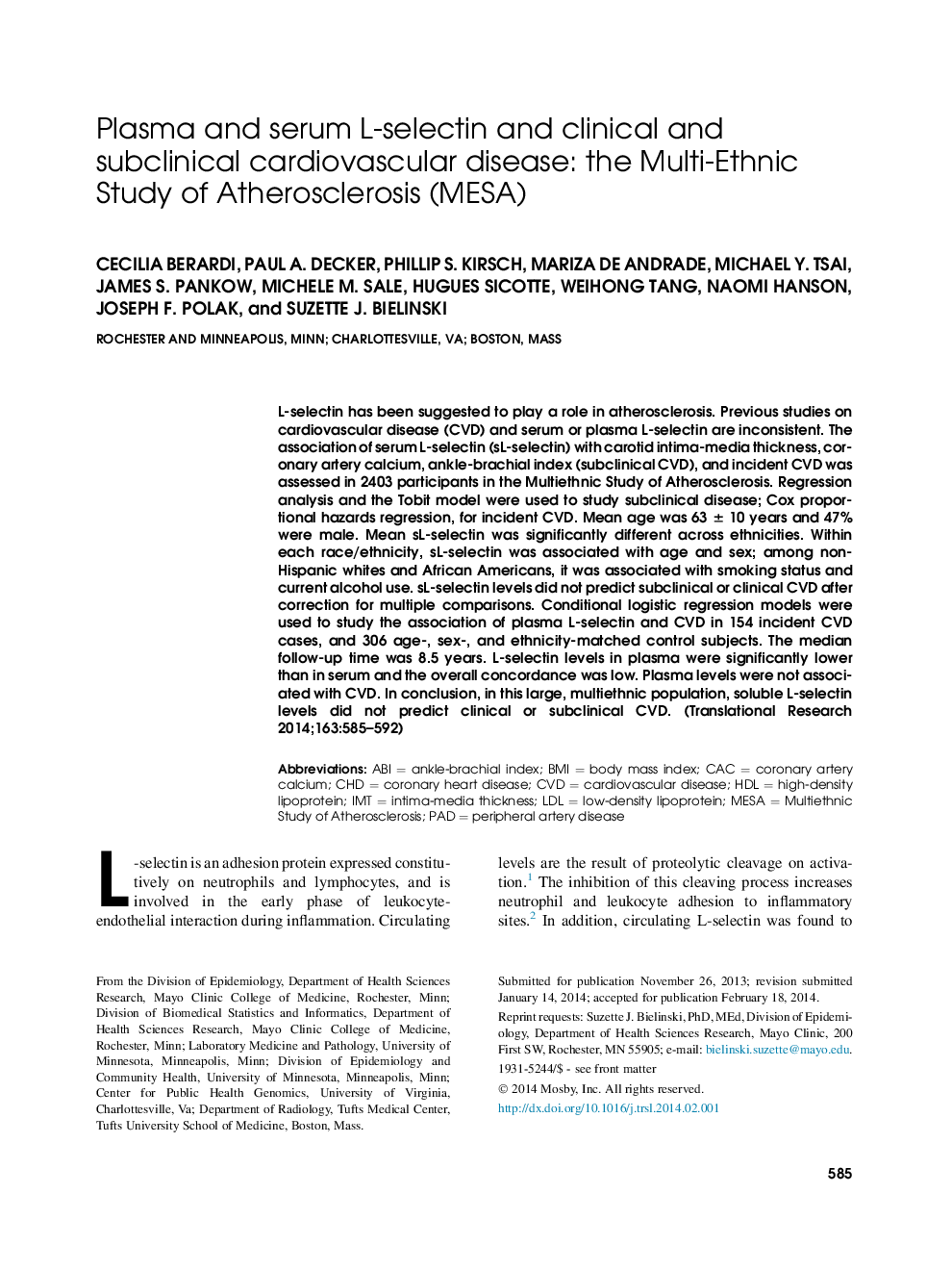| Article ID | Journal | Published Year | Pages | File Type |
|---|---|---|---|---|
| 3840254 | Translational Research | 2014 | 8 Pages |
L-selectin has been suggested to play a role in atherosclerosis. Previous studies on cardiovascular disease (CVD) and serum or plasma L-selectin are inconsistent. The association of serum L-selectin (sL-selectin) with carotid intima-media thickness, coronary artery calcium, ankle-brachial index (subclinical CVD), and incident CVD was assessed in 2403 participants in the Multiethnic Study of Atherosclerosis. Regression analysis and the Tobit model were used to study subclinical disease; Cox proportional hazards regression, for incident CVD. Mean age was 63 ± 10 years and 47% were male. Mean sL-selectin was significantly different across ethnicities. Within each race/ethnicity, sL-selectin was associated with age and sex; among non-Hispanic whites and African Americans, it was associated with smoking status and current alcohol use. sL-selectin levels did not predict subclinical or clinical CVD after correction for multiple comparisons. Conditional logistic regression models were used to study the association of plasma L-selectin and CVD in 154 incident CVD cases, and 306 age-, sex-, and ethnicity-matched control subjects. The median follow-up time was 8.5 years. L-selectin levels in plasma were significantly lower than in serum and the overall concordance was low. Plasma levels were not associated with CVD. In conclusion, in this large, multiethnic population, soluble L-selectin levels did not predict clinical or subclinical CVD.
